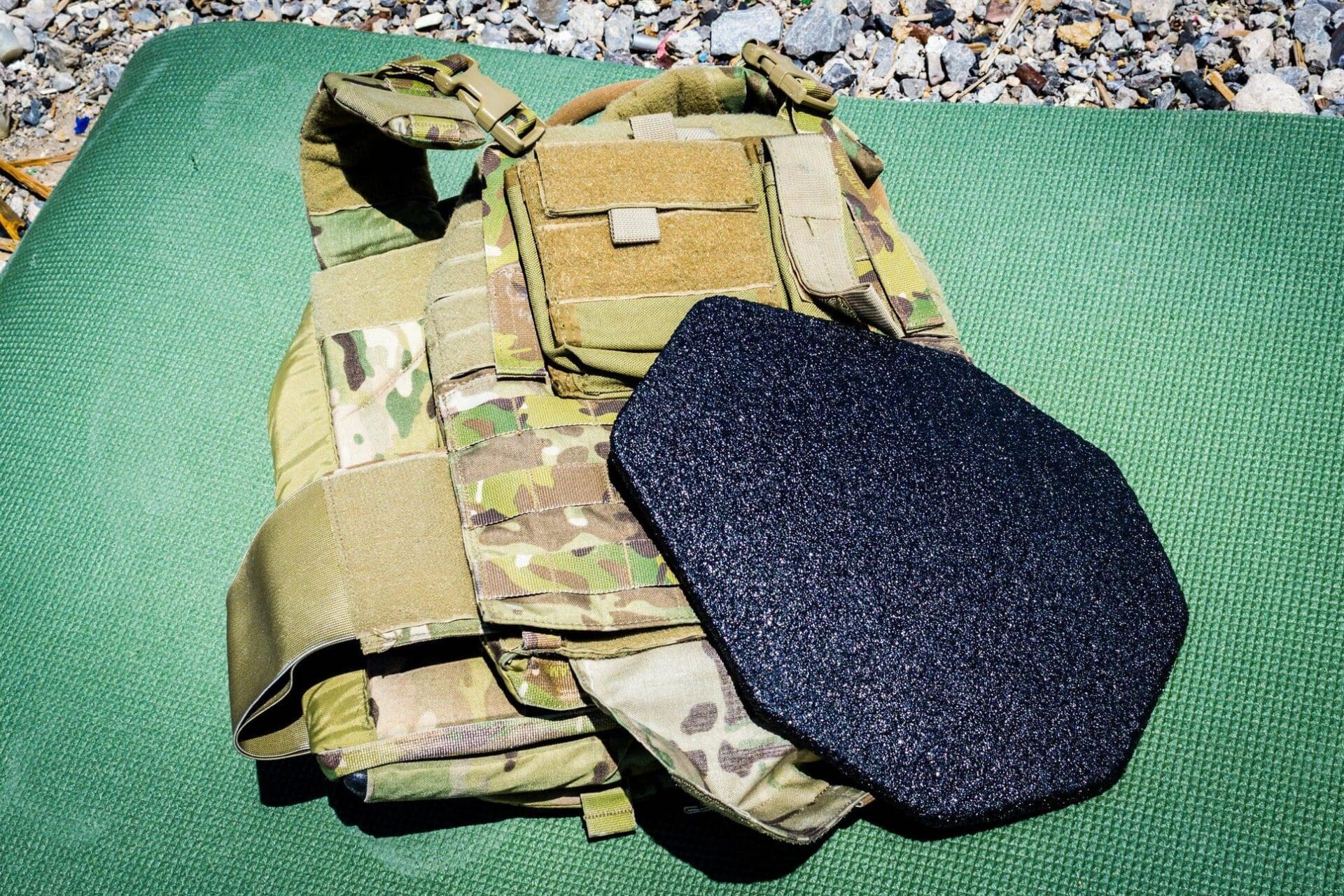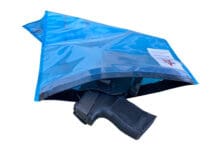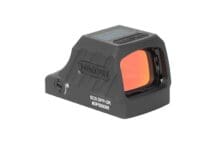Hard Armor. The only category of Small Arms Protective Insert that can stop rifle fire. Whether you need armor to run a shoot house, as a response vest for an active shooter, or store them ready for SHTF, it’s going to be hard armor.
But hard armor has options.
Polyethylene armor, is the first. Yes, Plastic Armor. Ultra High Molecular Weight Polyethylene is a lightweight alternative to steel and ceramics that cuts the individual plate weight to about one third the original. This cuts your total carrier weight nearly in half depending on your loadout. The weight savings doesn’t come without cost but adding the buoyant plates to your carrier can save the pain and strain on the body while it lightens the wallet a little too. The plates have the industry standard 5-year shelf life although, like ceramic and soft armors, they retain protective value when undamaged and properly maintained.
Next up, AR500 Armor’s Level III+ Lightweight Steel plates. These were fresh on the market a few years ago when we gave them a favorable review. We’re still confident in our positive evaluation of these plates and will be for years to come, the steel has a well above average armor shelf life, 20 years.
Passing the National Institute of Justice (NIJ) performance standards in the first place is no cake walk. Unlike the manufacturing requirements for guns and ammo, the NIJ standards for armor are very stringently enforced and require a large sample size of product to pass. The plates have earned an exceptional reputation in their space.
They tend to hit the sweet spot for many shooters in terms of cost, comfort, and utility, plus the 20-year shelf life. AR500’s plates are the lightest Level III steel plates on the market, we verified on when we reviewed them.
The Advanced Shooter’s Cut available for these armor plates is a substantially more comfortable design than a regular square insert. It increases your freedom of movement when shooting and drawing by relieving area near the shoulders. While surface area is decreased by 9% the plates profile protects the body’s core.
Level III+ is rated to stop most common rifle rounds: 5.56×45 M193 and 5.56×45 M855 SS109 at a velocity of up to 3,000 fps, 7.62×39, 7.62×51 M80 NATO Ball (.308 Winchester) at velocities up to 2,850 fps. Unlike other steel armor, AR500’s lightweight armor is 30% stronger blend which allows it to be lighter and thinner. We put that claim to the test and were impressed to find that a 3/16″ plate could take the impact of a M855 steel core round without any backface deformation.
All in all these plates deliver what they promise with a lighter more comfortable plate at a lower price than ceramic or plastic. Bonus: if you’re on a budget choosing these plates over a competing lightweight material will give you the leftover cash to cover the cost of a nice plate carrier.
AR500armor.com has the full selection of armor, carrier, and accessory options and you can take a look at their gallery of live fire testing videos here while you browse.





As I recall, the Composite Armor comes in Two Colors. Red and Black! The Red will stop a Black Tipped FN5.7×28 Bullet at Point-Blank Range, the Black one won’t…
So if I have a black one I should paint it red, got it.
Thanks!
This is counter-intuitive – you would think red would enrage the bullet more.
Don’t be silly. Everyone knows bullets are color blind.
Why play around with anything other than RMA IV?
I haven’t ‘taken a round’ wearing one, and YMMV, but Armor Advantage’s ‘Red’ plates are (claimed to be) able to stop a 7.62-54 (30.06). http://www.armoradvantage.com/
whoops 7.62-63 (30.06) but also (the lesser) 7.62 x 54R.
I don’t care if your plates ‘float’, if you can’t un-ass your plate carrier if you hit water, or get a vehicle-wedgie in a roll-over accident, you’re hosed.
Plastic is triple the cost and only a 5 yr shelf life. I also try and limit my SEAL ops to the farmpond I can wade in these days so I don’t need to float.
Ceramics well I don’t have an x-ray to make sure they are ok every time I drop one nor do I have a green machine resupply if one does take a hit.
The steel is cheap, tough and ready to go. AR500 is a good company though you need to watch those lead times when you order. My 3 week turned into a 10 week when I bought my kit.
This was my mindset on the process. Steel is heavy, but it doesn’t have any issues with shelf life, degradation, or worries if it’s dropped on a corner. When the poly stuff is set for life, I’ll spend the money. I don’t have the money, no do I want to spend the time and effort buying new sets every 5 years for stuff I will probably never actually use.
That’s where I’m at – I’ve been wanting to add a plate to my backpack from AR500… the steel is a third of the price and only two pounds lighter (10lb vs. 8lb) compared to the “lightweight” version.
I dont wear my pack all day, just for brief trips aroung the mall or grocery store – so I’ll probably be going with steel.
🤠
Why would steel plates have a 20 year shelf life? Its . . . steel.
Probably the anti-spalling coating and the padding don’t last forever.
So that you have to buy more in 20 years… duh
If I am still doing stuff where I expect to get shot at 20 years from now, I am very lucky, and have screwed up badly.
Are you doing stuff where you expect to be shot right now?
If so, I recommend that you stop doing those things.
Approximately 41mm (~1.6-inches) of AlON “Aluminum Oxynitride” a CerMet (Ceramic/Metal) Composite Armor will stop a .50BMG AP round at Point-Blank Range. Unfortunately it will Still Kill the Wearer, because the Kinetic Energy has to go somewhere. And will be passed onto and through the wearer. Costs about $15.00/sq.in. …
I am pretty sure a comparable amount of energy goes into the shooter’s shoulder. I know of no one who has died shooting a gun. I also know of no one who has died from being shot that did not penetrate.
I think you are wrong. You can survive a non penetrating hit from a .50bmg. Even at close range.
Ahhh huhhh! I doubt that anyone could survive an Impact Hit of ~14,895-ft/lbs. (~20,195-joules) of Impact Energy. That kind of force would Rip the Head Off a Brun or even a Polar Bear…
Ok, did you read the previous comment? Just restating how large the amount of energy is doesn’t address the point that that same amount of energy also hit the shooter in the “equal but opposite reaction” thing that happens in the universe we live in. That exact same huge amount of energy, minus what was absorbed in any recoil movement of the bolt and recoil spring (if there is any), and the energy absorbed in moving the mass of the gun that was fired, is what hits the gun user’s shoulder, spread out over the contact area of the stock. At the plate wearer’s end, some of the bullet’s energy has been lost via drag through the bullet’s flight, some absorbed by the destruction of the plate and bullet, and some energy is retained by bullet fragments that ricochet. The rest is transmitted to the plate wearer. Without having measured these different variables, it still seems that the overall impact on the plate wearer would be more than at the shoulder stock end, but not so much more as to be guaranteed lethal. My biggest question is how evenly the plate is able to distribute the transmitted energy over the entire surface of the plate–if the plate transmits it through a small area, more pain/damage to the wearer’s tissues. But if it can spread it through much of the plate’s area, that’s potentially a much better dilution of the per-square-inch force than the shoulder stock provides. If you’re really convinced that the 50BMG impact would be lethal if it doesn’t penetrate the plate, at least explain the mechanism you think is at work that would transmit the force in a small enough area so as to be lethal. I’m pretty sure that the main reasons bullets are lethal are 1)the actual tissue damage done by the penetration of the bullet and 2)the additional trauma damage due to the “energy dump” from the bullet to the tissue of the body, which has been concentrated into a very small point of impact (the diameter of the bullet, basically). The reason the stock doesn’t kill you is because of how it spreads that force out over a much larger surface area. The plate does the same thing, so if the penetration damage is eliminated—so is the lethality.
Exactly how do you go about getting an “Equal & Opposite Reaction” if the Force Applied is coming from one direction. Even if you were wearing an Impact Vest under the Armored Vest. The Impact Vest would be incapable of absorbing that much energy…
That impact energy is being spread out over a (relatively) large area.
Let’s say, just for fun, 12″ X12″ = 144 sq in plate. That’s only about 104 ft/lbs per sq in. Little more survivable, eh? Moreover, deforming the ALON sucks up a very decent amount of that energy before it can be transferred to the wearer.
Would definitely not be a fun plate strike. But unless you have other serious issues, one would survive.
Go for it. Don’t forget to Post the Accident on YouTube, to get your 15-seconds of Fame…
I am now for sure that Sich does not understand basic physics.
The equal and opposite force that we are referring to is at the shooter. If I shoot a firearm without aid and survive, the round simply does not have enough energy to kill alone. I know this because I just survived comparable energy. The energy used to propel the bullet also makes the rifle recoil and my shoulder move.
The stock primarily, but other systems may contribute, to dissipating the energy over a larger surface area acting over a longer distance. Because of this, I don’t die when I shoot a rifle.
The bullet does not gain energy as it flies through the air. So the target can only receive as much energy as was put at my shoulder. In the real world, the bullet will not have as much energy.
If this energy at the target is dispersed over a similar or larger surface (such as a plate) the round hits (mostly) harmlessly.
Now, all bets are off if the round penetrates or there is significant back face deformation.
I was an Armaments and Repair Officer in the US Army back in the ’70’s. Rearming and Repairing Bell AH-1S TOW-Cobras. I suspect that gives me a Modicum of Knowledge of how Ballistics Work…
It apparently does not. Ballistics is just a form of physics. It is still constrained by the laws of physics. You can argue all you want, but greater minds than you or I figured this stuff out years ago.
I am saying basic laws of physics shows your wrong. If you can not come up with any better arguments than “I once worked somewhere, so I know I am right.”, then I suggest you just leave this one alone.
Point Blank Range for a “Ma Deuce” is 100-meters of less. Traveling at ~927.81m/s (~Mach 2.8), w/~647-grain (~22.82-oz) projectile you’re going do more than just feel PAIN…
Sich, using F=ma please calculate the energy of a full DoT-loaded (80K #) semi. At 4 mph. Protip: It is more than the energy of a .50BMG.
Have another drink, go to bed.
Go to Big Sandy in Arizona! I’m fairly sure you won’t have any problem finding someone to help you Test You’re Theory…
If you’ll buy the transparent aluminum, I’ll film the test.
No need to travel, I have access to plenty of stuff that will chamber .50BMG.
When it’s over, you have to attend/pass 8th grade, which is where you should have learned enough physics to not espouse embarrassingly ill-informed opinions.
Made by the Surmet Company inside Boston, MA. Unfortunately I can’t afford ~$15.00/Sq.In. But I’m fairly sure YOU can…
Why don’t you try standing in front of a Moving Semi traveling at ~40mph, and let it hit you. If you survive, maybe your String Theory is plausible…
@ V16
Go for it! Don’t forget to post it on YouTube, for your 15-milliseconds of fame…
uh huuh…
Math….
Why does everyone miss the fact that the bullet has about 20 inches of barrel to gain speed but stops within approx 3/8″ when hitting a plate while transferring that energy into a 1/2″ circle.
The rifle weight, plus the acceleration distance, plus your shoulder, and the reloading if its a semi, all adds to less felt recoil compared to the instantaneous stopping of the round.
That’s why cars don’t tear in half when accelerating but crush when they hit another car.
Geeze…….
Go watch the youtube video of the 50BMG that misses the deer by inches and still kills it from the shockwave.
Then think about taking one to the chest…..
Comments are closed.